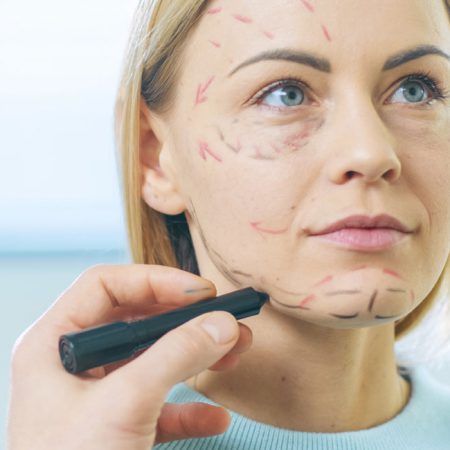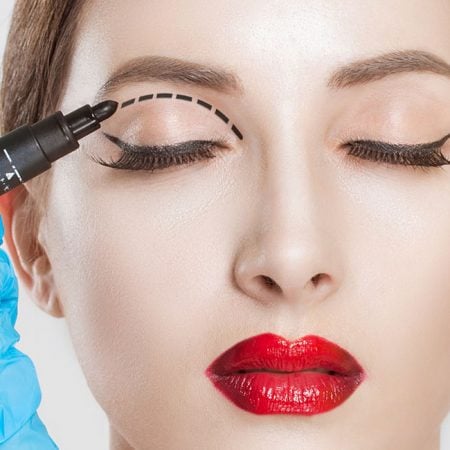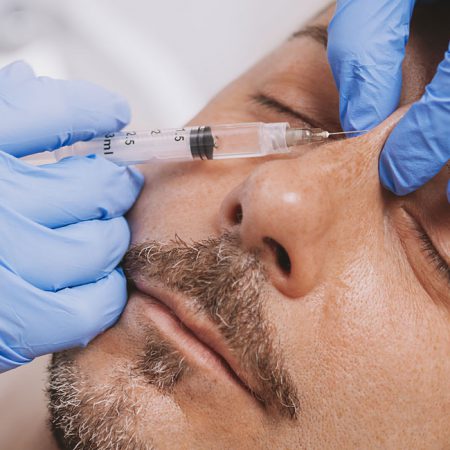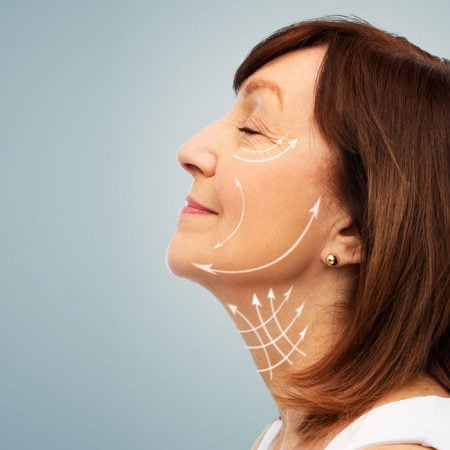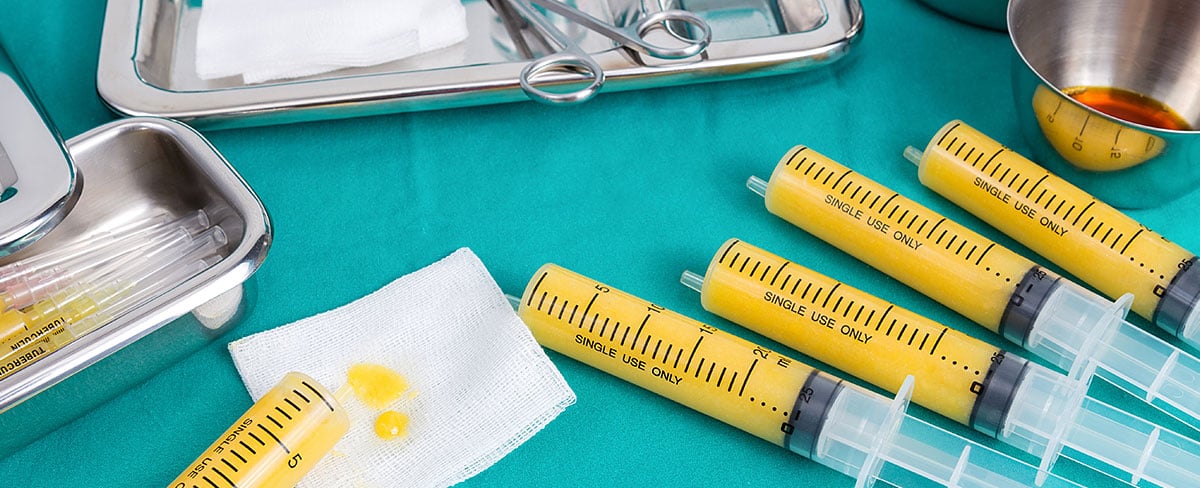The face and its expressions often give initial impressions, sending messages regarding emotion, health, vitality, and age. Over time, the face and its features undergo age-related changes that make people feel as if they look tired, angry, sad, or older than they feel. These changes often first start to occur in the brow, or forehead region, which include the formation of forehead lines, glabellar creases, and drooping of the brow itself. A forehead lift, or brow lift, can help to lift the brow line to a higher position and reduce the appearance of lines and wrinkles, restoring a firmer, more youthful appearance to the upper portion of the face.
Procedure
Price Range
$ 6,000 - 10,000
Length
of Surgery
2-3
Hours
Surgical
Anesthetic
General Anesthesia
Bruising
Swelling
14
Days
Return
to Work
14
Days
Final
Results
6
Months
What Causes the Brow to Change?
Before you understand how a forehead lift works, it is important to understand the underlying structure of the face and how the aging process causes the brow to change. The face is composed of layers of skin, muscle, and fat. With time, age and environmental factors like sun damage, cause the skin’s support network of collagen and elastin in the dermis to break down. As a result, the skin loses it structure and elasticity and becomes lax. Furthermore, layers of muscle weaken and fat deposits, which normally act as a cushion between skin and underlying bone, are depleted. As a result, lines and wrinkles in the brow region become increasingly apparent. A forehead lift can reduce their appearance as well as lift the brow, often achieving results that make you look as much as ten years younger.
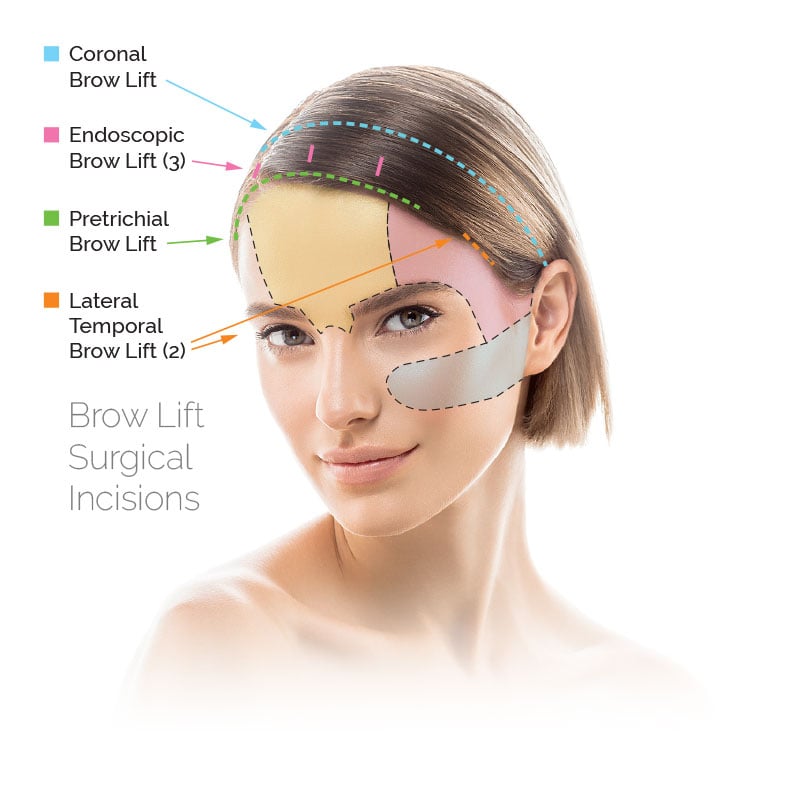
The Brow Lift Surgery
While there are several different techniques that a physician can use to alter the appearance of the brow, one of the most common is known as a coronal lift. This type of forehead lift involves making an incision that extends from ear to ear around the coronal region of the head. The procedure usually involves removing loose, excess skin, as well as disrupting muscle activity and function. It is important to understand that those individuals who are bald, have receding or high hair lines, or have had upper eyelid surgery may not be optimal candidates for this procedure. However, your physician may be able to use a different surgical technique in order to achieve the desired results.
Surgery Preparation
A forehead lift may last approximately one to three hours, depending on the extent of treatment and the surgical technique used. Prior to the start of your procedure, your hair may be parted along the incision area by combing it back and fastening it with small aluminum foil wraps or rubber bands. In addition, the physician may choose to apply an antibiotic ointment to your hair to help hold it in place. The treatment area will be cleansed and incision guidelines will be drawn. The procedure may be performed under local anesthesia and sedation, in which the treatment area is numb and you are in a relaxed state. Alternatively, the physician may choose to administer general anesthesia, in which you are asleep.
Coronal Incision
To begin the procedure, the physician will make an incision that extends from ear to ear, over the coronal region of the head which lies approximately six to eight centimeters behind the natural hairline.
Tissue Elevation
Using a variety of surgical instruments, the physician will carefully dissect the skin and muscle away from the frontal bone. In order to fully elevate the tissue, the dissection will also extend outward into the temple regions. The physician may also use a cautery device along the incision area, which in addition to dissecting tissue also minimizes bleeding. While in some instances the tissue may be fully elevated from the forehead as shown here, very often this extent of elevation is not necessary. Using a retractor, the physician pulls the tissue away from the forehead to expose the different muscles in the upper region of the face. some of these muscles will then be removed to reduce the appearance of lines and wrinkles in the forehead.
Muscle Augmentation
In general, there are three different muscles in the upper face that may be addressed, including the frontalis, corrugator, and procerus muscle. As you may know, repetitive muscle movement creates different wrinkles in the various muscles. Using a variety of different techniques, the physician will correct these signs of aging by carefully removing small areas of the different muscles. Depending on the extent of treatment necessary, the physician may choose to augment all of the different muscles or only a subset of them. By modifying the muscles in the region, the physician disrupts normal muscle activity without compromising proper muscle function. As a result, lines and wrinkles will diminish and your muscles will still function to create facial expressions.
Incision Closure
After addressing the different muscles, the physician will determine how much skin must be removed. Small sutures will be placed along the incision to determine the correct amount of tension. Once the proper amount of tension has been applied, the excess skin will be removed. Prior to closing the incision, a small surgical drain may be placed in the temple region; however, it is often not necessary. The incision will then be completely closed with sutures. Your physician may choose to apply gauze pads and a bandage to the incision, although some prefer not to use any type of dressing.
Coronal Brow Lift Recovery
As with any surgical procedure, you will likely experience some discomfort, swelling, and bruising in the upper portion of your face and around your eyes, which can be alleviated with cold compresses and pain medication. Your physician may also recommend that you keep your head elevated as you recover, in order to reduce bruising and swelling in the area. If a surgical drain was used, it will likely be removed in one day while any stitches or sutures may remain in place for approximately four to seven days. You may experience some temporary numbness around the incision area after surgery. While you will feel well enough to return to work in approximately a week, the swelling, bruising, and numbness make take a few weeks to completely subside. It is important that you avoid strenuous activity such as heavy lifting or exercise for at least two to three weeks following the procedure to allow your body sufficient time to heal.
Coronal Brow Lift Results
You will likely be able to notice the results very soon after your procedure. They will become even more evident in two to three weeks as the bruising and swelling continue to fade. As all individuals heal at different rates, it may take several months for you to see the final results. While you will have a permanent scar that extends from ear to ear, it will be well hidden within your hair. It is important to realize that a forehead lift will not stop the aging process. However, it can significantly reduce the appearance of lines and wrinkles, as well as a sagging brow line, revitalizing your upper face for many years to come.
Those horizontal lines on our foreheads or creases above our noses can make us look tired, sad, angry, or older than we truly are. A forehead lift can take years or even a decade off our faces by tightening and lifting the skin on our foreheads, thereby eliminating wrinkles and expression lines. The end result is a more refreshed, youthful appearance. In a forehead lift, incisions are first made above the hairline to avoid visible scarring. Dr. Pasquale then removes the excess tissue and muscle that makes the brow sag and lifts and tightens the skin resulting in a smooth, youthful appearance. To find out if a brow lift is right for you, please contact our practice today.
The Brow Lift or Forehead lift
The lifting of the brow is exactly as it sounds. The plastic surgeon through various techniques either surgical or non surgical lifts the brow. The brow and eyes are intimately connected and most people don’t realize how much of an effect a brow lift can effect your eyes as well. Many times even plastic surgeons mistakenly believe the client needs an upper eyelid lift when in fact the lower brow (brow ptosis) is what gives the patient droopy upper eyelids.
Look closely at the picture of the younger Sylvester Stallone (above). Note how the brow is lower with age. Even though it appears he has had upper eyelid surgery (blepharoplasty) the problem remains the brow. Simply performing upper eyelid lift will not solve this problem. This actor would benefit from a brow lift. Also note the eyebrows, and there is no youthful arch in the older stallone picture. If Mr. Stallone had his brow lift the upper eyelids would most likely not appear as extra skin.
Schedule a Consultation with Dr. Michael A. Pasquale
Consultations allow a plastic surgeon to evaluate you and answer all the important questions that are impossible to answer otherwise, such as surgery options and surgery prices etc, All consultations are complementary and by appointment only.
Types of Brow Lifts
There are several techniques to lift the brow. These can be non-surgically (such as thermage) or full surgical correction with the coronal brow lift. The coronal brow lift procedure can be seen in detail in our plastic surgery video gallery. The brow lift when performed artistically and not over done is one of the miracle procedures we use to restore facial harmony and youth. Below are two examples. Both patients of Dr. Pasquale. The first one is actually a young patient with brow ptosis and the one further below is older and typifies the aging process.
These corrections were made by Dr. Pasquale with the coronal brow lift and canthopexy. Neither patient had upper eyelids surgery. So as you can see from these photographs, many times upper eyelid surgery should be very minimal or should not be done at all. Dr. Pasquale uses the coronal brow lift for more severe cases of brow ptosis or for those who are looking for more significant and permanent correction.
Endoscopic Brow Lift
Brow lift can also be done with an endoscope using “minimal” invasive surgery. Endoscopic brow lift can also be viewed in our 3d plastic surgery gallery.
This is done with such instruments as seen in the above picture through small openings created by Dr. Pasquale in the scalp. The endoscope is inserted and we can visualize the process on a screen.
Dr. Pasquale uses the endoscopic brow lift procedure for those clients who need less correction here at his Hawaii Plastic Surgery Clinic. If you are interested in less invasive procedures for Brow Lifting please go to that section of our web site to learn more about Thermage and about Dr. Pasquale’s special Botulinum Toxin technique to lift the brow.
Brow Lift Complications
- Nerve injury which can limit motion of forehead after brow lift, rarely permanent.
- Bleeding after brow lift surgery which can require surgical intervention to stop or one can have significant bruising.
- Infection after brow lift which can occur with any surgical procedure.
- Prolonged swelling.
- Asymmetry or unevenness
Although complications of brow lift are rare at our Honolulu clinic we want you to understand the risk before any procedure. If your interested in learning more please contact our office.
